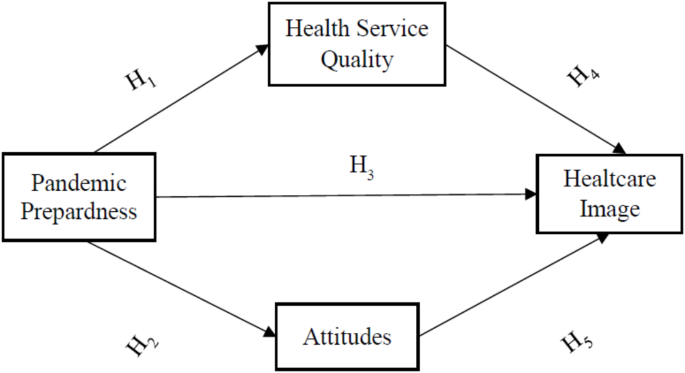Why intergenerational leadership is redefining business
Against the rising tide of technological advances, resilience risks and shifting social expectations, companies are seeking ways to future-proof their strategies.
Incorporating younger generations into governance offers a strategic yet underutilized advantage. With deep digital fluency, affinity for entrepreneurship and positive social impact, they are uniquely positioned to identify emerging trends, catalyse innovation and inject a forward-thinking perspective into boardrooms.
What’s more, entrepreneurship among young people is on the rise. New research shows that six in 10 young adults plan to be their own boss by the age of 30. In the United States, those aged 18-35 are launching businesses at higher rates than older age groups and show a stronger commitment to minimizing environmental harm and maximizing social impact.
This upward trend in youth-led for-profit and nonprofit ventures is an opportunity for companies to refresh their innovation pipeline while avoiding disruption risk.
However, corporate youth engagement programmes are not yet integrating or partnering with young people and private sector governance has arguably not evolved much over the last hundred years.
Years of experience is still the leading criterion for board selection, as reflected by the average director age of 63 and rising for companies in the S&P 500, which could hinder future company performance, growth and resilience.
According to Forbes, intergenerational leadership is “key to organizational success,” based on the idea that “each generation has something valuable to offer each other.” Numerous studies reinforce this notion:
Research shows a positive correlation between age-diverse corporate boards and stronger financial outcomes. A study led by the University of New Hampshire found that boards that include generation X directors outperform peers, specifically in return on assets and price-to-book ratios.
Similarly, PwC’s research across 11,000 Dutch firms revealed that companies with boards closest to the “goldilocks” age‑diversity band posted materially higher solvency ratios, meaning the same profit with a less risky balance sheet.
The authors estimated €51.8 billion in untapped value if companies hit this optimal mix.
Blending younger generations’ digital fluency with seasoned strategic judgment has the potential for catalysing innovation and growth. Millennials and generation Z are early adopters, digital natives, while baby boomers and generation X offer deep industry expertise.
Studies from MIT Sloan, Ernst & Young, Deloitte and Google Workspace show younger generations lead in daily adoption and expertise of new technologies, boosting productivity by up to 40%.
In artificial intelligence (AI), McKinsey reports 50-62% of 18-44-year-olds self-report “extensive familiarity” with generative AI tools compared to 22% of over 65s. Younger cohorts are also more likely to mentor peers, accelerating organization-wide digital literacy.
As AI drives a projected $4.4 trillion in productivity, integrating younger generations into decision-making ensures companies adapt and scale in the digital era.
Intergenerational leadership is consistently linked to stronger corporate social responsibility (CSR) outcomes. A meta-analysis of over 50 empirical studies concluded that multi-generational boards improved sustainability performance.
Younger directors are often more attuned to social and environmental risks, helping boards respond more effectively.
The study found that ageing boards can unintentionally hinder CSR and replacing an over-65 director with a younger member can boost CSR performance by 15%, primarily due to their increased responsiveness to business environmental risk.
Research from the UN Youth Office, St. Gallen Symposium and The Club of Rome reinforces that intergenerational leadership can enhance resilience and foster innovation for the triple bottom line.
“
Intergenerational leadership is moving from an academic concept to tangible action in councils and boardrooms.
”
Historically, companies have designed their engagement with younger generations to:
These programmes undoubtedly provide value and nurture skills and innovation, often serving as a practical entry point for youth engagement. However, more meaningful integration, partnerships and consultation can unlock even greater business benefits.
The #GenerationRestoration Youth Hub, a global community of over 100 leading young ecopreneurs with a reach of over 120 million, calls for a paradigm shift: leadership is no longer an individual endeavour but is shared across generations, geographies and sectors.
Over 50 chief executive officers and chief sustainability officers have convened with young leaders from the World Economic Forum’s #GenerationRestoration Youth Hub to discuss how businesses can embed younger generations into decision-making spaces.
Several pathways emerge for companies:
Regular consultation offers companies fast and flexible collaboration and response to critical generational insights, including on AI ethics, sustainability and shifting societal expectations.
Neutral spaces for intergenerational dialogue, as facilitated by the Forum’s #GenerationRestoration Youth Hub, allow companies to challenge their own assumptions, co-create solutions and identify collaboration opportunities.
Forward-thinking companies such as Ingka Group are demonstrating how formal consultation mechanisms can unlock shared value. Ingka’s engagement with younger stakeholders led to a co-designed playbook for intergenerational dialogue, with practical strategies for bridging divides and catalysing joint action.
External youth advisory councils help companies embed next-generation insights into decision-making, enhance credibility with younger stakeholders and catalyse social impact strategies.
Since 2021, Inkga Group’s Young Leaders Forum, a global youth advisory council of young entrepreneurs, has advised on environmental commitments and has been lauded for helping drive innovation, accountability and meaningful action in the company’s sustainability efforts.
Similarly, the Forum’s 1t.org platform embeds intergenerational governance across its councils to ensure younger voices are part of decision-making to guide its mission on forest protection and restoration.
The boldest step – yet potentially most transformative – is appointing younger leaders to formal board positions. While still rare, examples are emerging, especially in tech-forward companies such as Meta, X, eBay, Warner Bros. Discovery and Expedia – where younger directors help navigate rapid market shifts.
Founder-led and family-influenced companies, including LVMH, Frasers Group and Ford, also embrace intergenerational governance to preserve legacy and ensure long-term strategic continuity.
Intergenerational leadership is moving from an academic concept to tangible action in councils and boardrooms. Formally involving younger generations – through consultation, advisory roles and board representation – marks a shift from traditional leadership models and expands the pool of expertise and benefits for future-focused organizations.
The evidence is clear. Intergenerational leadership boosts financial performance, drives innovation and strengthens resilience. As adoption grows, the case for intergenerational leadership and governance will only become stronger.











